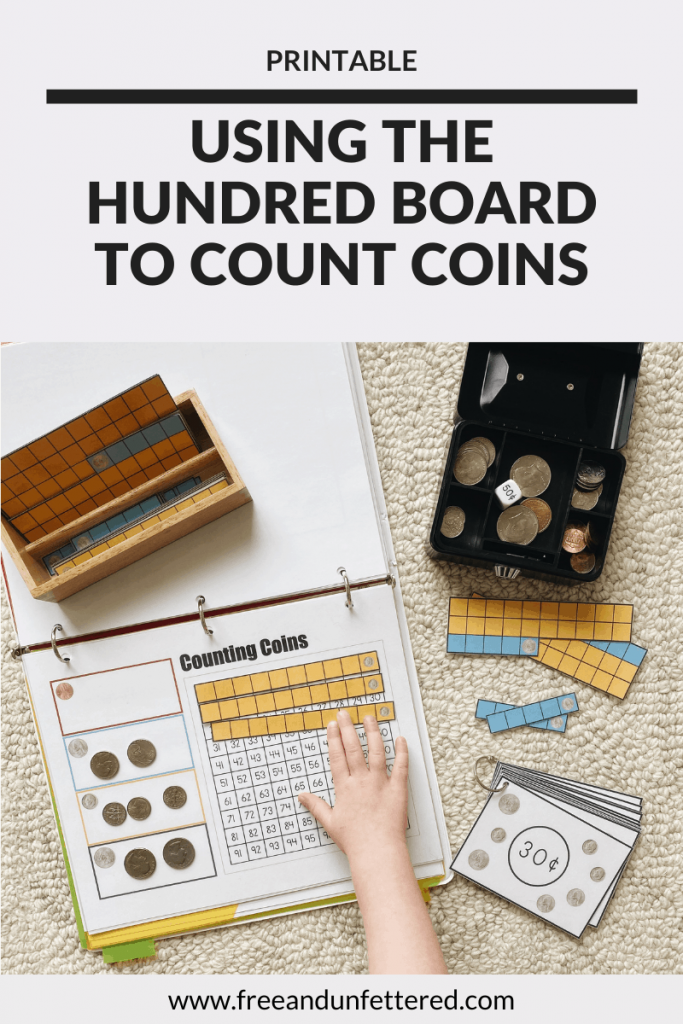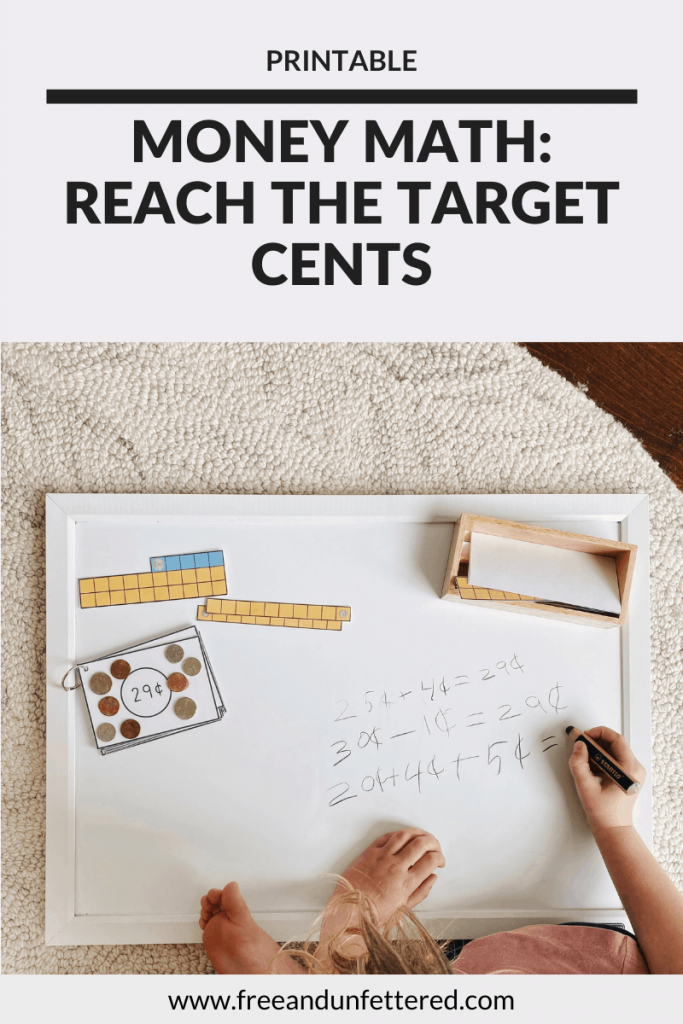Teaching Children to Count Money: Fun Activities for Kids
Are your kids ready to start learning about money or could they use additional practice learning how to count money? Teaching children to count money is an essential skill that builds number sense and strengthens early math abilities. With this printable Montessori-inspired bundle, you’ll have everything you need to introduce your kids to learning how to count money. These hands-on activities help children identify, count, and work with money.
DISCLOSURE: THIS POST CONTAINS AFFILIATE LINKS AT NO COST TO YOU. THIS MEANS I MAY RECEIVE A SMALL COMMISSION IF YOU MAKE A PURCHASE USING THESE LINKS.
Teaching Children to Count Money
We’ll be spending the spring semester learning about U.S. coins and money in our Montessori-inspired homeschool. To be honest, we’ve yet to do much work with coins and money before, so with my oldest now in first grade and my youngest in preschool I felt it was a good time to introduce some money-related activities on their work shelf.
I specifically created the activities in this math bundle to fulfill learning objectives for both primary and lower elementary students.
You can find Counting Coins: A Money Math Bundle in the Shop along with other homeschooling and educational resources.
Teaching Kids to Count Money: What’s Included?
- What’s in a Dollar? A Booklet for Kids
- Reach the Target Cents cards
- Part-to-Whole coin cards
- U.S. Coin sorting cards
- U.S. coin money strips
- Counting Coins hundred board mat
- U.S. Coins Heads and Tails memory game
- U.S. Coins and Cents memory game
- The Race to $1.00 mat
- U.S. Coins 3-part cards
- U.S. Coins reference charts
How to Use These Printable Activities
First, present the 3-part cards, U.S. coin sorting cards, and reference charts to introduce each coin and its monetary value to children. Both the Heads and Tails and Coin and Cents memory games will help children easily identify each U.S. coin.

Counting Coins
Once your kids can quickly identify each coin and its associated monetary value, you can begin to practice counting coins with them. Because children are very concrete thinkers in primary and even in the early years of lower elementary, the U.S. Coins math bundle includes paper money strips along with a Counting Coins hundred mat to provide a hands-on learning experience. Therefore, children can move and manipulate each coin strip onto the hundred board to build coin totals and visually see how many of each type of coin are in $1.00.
Additionally, each money strip has a picture of its associated coin for a control of error and are designed to reflect the Montessori bead bar colors (penny squares are red, nickel strips are light blue, dime strips are gold, etc.).

To present this activity to your kids, simply select a few random coins (or roll money dice) and demonstrate to your child how to select the corresponding coin strips. Then place the strips onto the Counting Coins hundred mat to determine the sum. With this work, children will also exercise other key mathematical skills, including number identification, number sequencing, and number sense.
The What’s in a U.S. Dollar booklet can be presented alongside this work to serve as an extension activity. “Can you fill up the hundred chart with only dimes? How many will you have? What about quarters? How many will you need?” Once children become comfortable combining one coin type at a time, you can add in additional ones: “If you have two dimes and two nickels, how many cents do you have?”
Try to include as many word problems relating to money as you can to encourage your children to apply their knowledge of money and cents to real-life, practical scenarios.
Part-to-Whole Coin Counting Cards
Once your children are comfortable counting by 1’s, 5’s, and 10’s, the Part-to-Whole coin cards will challenge them to build money totals using a certain number of coins. Please ensure you have double-sided printing enabled for these cards as there is a control of error on the back of each card. Children can use the coin strips and Counting Coins hundred chart alongside these task cards for additional assistance. Older children may enjoy the challenge of trying to solve the problems abstractly.

Target Numbers: A Counting Coins Activity
Have you played Target Number with your kids before? We began implementing number talks earlier this school year, and my first grader’s absolute favorite has been finding and discussing all the different ways you can combine a select set of numbers to reach a target sum. I love that it fosters creativity and divergent thinking skills, emphasizing that there’s not just one “right” way to solve math problems and bringing attention to the fact that we all see things differently. Gotta love when you can seamlessly incorporate social-emotional development into a math lesson, right?
Target Number has been the most popular math activity on her shelf for the past 4 months, so of course I wanted to do something similar related to counting money. Children can use the Reach the Target Cents cards to discover all the different ways they can build the target money value. Working repeatedly with values of 1¢, 5¢, 10¢, 25¢, and 50¢ assists math fluency while the task of using multiple sets of numbers helps develop both math reasoning and problem solving.

Ready to purchase? You can find Counting Coins: A Money Math Bundle in the Shop along with other homeschooling and educational resources.
Implementing Money Games
If your family loves to implement games into your learning journey at home, I suggest purchasing some money dice to easily create your own “Bring Me” games with primary-age children. You can increase the difficulty of the game for lower elementary children by rolling multiple dice at once and giving them only a certain amount of time to commit the total value to memory and then have them retrieve the correct amount in coins. Scavenger hunts and “Bring Me” games are always pretty popular with my movement-loving kids.
I hope the materials and activities presented in this blog post are helpful as you work on teaching children how to count money. Please let me know if you have any questions about this product or any others available in our Shop. You may reach me via email at jillian@freeandunfettered.com, through the Contact Us form on the blog, or on Instagram @freeandunfettered.
If you’re using any of our products in your homeschool or classroom, we’d love to see! Simply tag us @freeandunfetteredlearning on Instagram.


